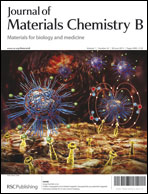In this contribution, we constructed a biosensor for screening G-quadruplex stabilizers based on the assembly of gold nanoparticles functionalized with guanine-rich (G-rich) ssDNA using a light-scattering technique. We synthesized a series of metal–terpyridine complexes and investigated their affinity for quadruplex-DNA using the biosensor. Using the ratio of intensity of the light-scattering peak (I − I0)/I0, it can intuitively present the sequence of ability of stabilizing G-quadruplex DNA as follows: complex 1 > complex 3 > MTX > complex 2 > complex 5 > complex 6 > complex 7 > complex 4 > methyl green > TO > complex 8 > cisplatin. As our method allows the quantitative analysis of stabilizer affinity, EC50 values obtained are 4.8, 5.3, 6.1, 6.6, 6.7, 18.2, 20.2, 21.5, 32.2, 41.5 and 48.1 μM for complex 1, complex 3, MTX, complex 2, complex 5, complex 6, complex 7, complex 4, methyl green, TO and complex 8, respectively. The results have been verified by G-quadruplex fluorescent intercalator displacement (G4-FID) analysis. The proposed approach is a simple, convenient, intuitive and highly sensitive assay for screening G-quadruplex stabilizers. Our developed biosensor provides a promising tool for screening anticancer drugs.


 Please wait while we load your content...
Please wait while we load your content...